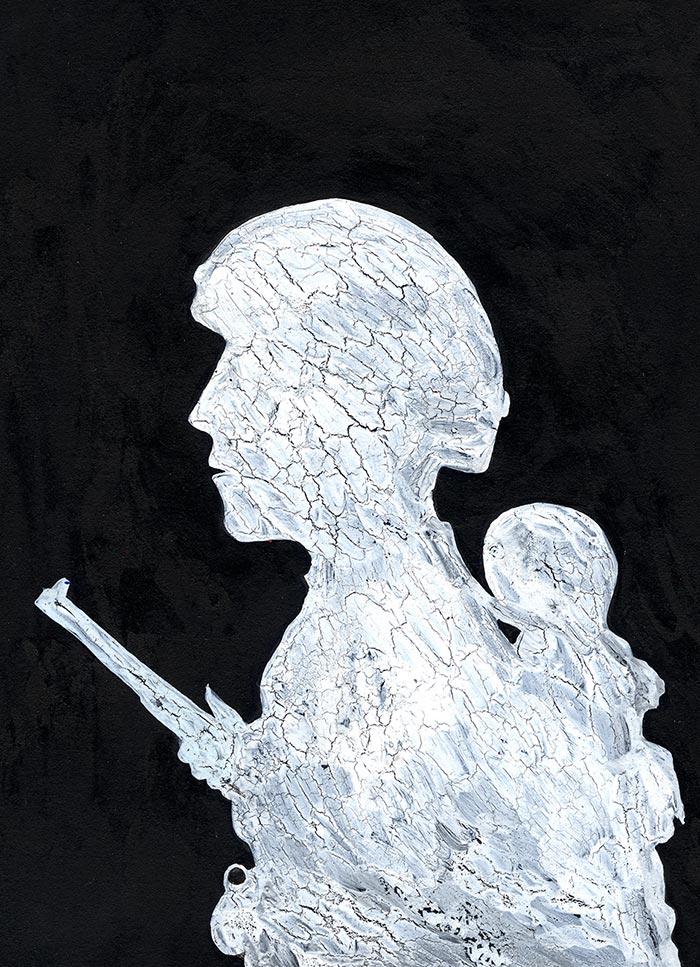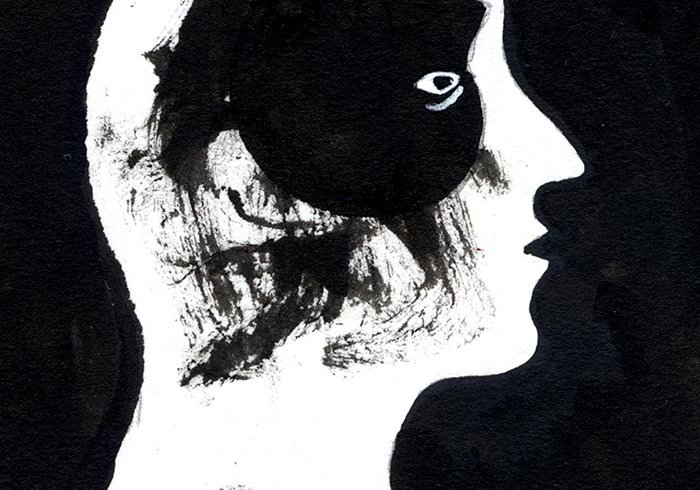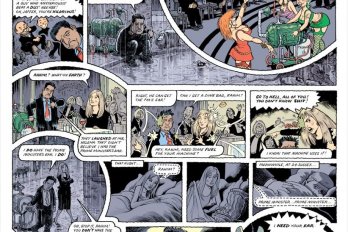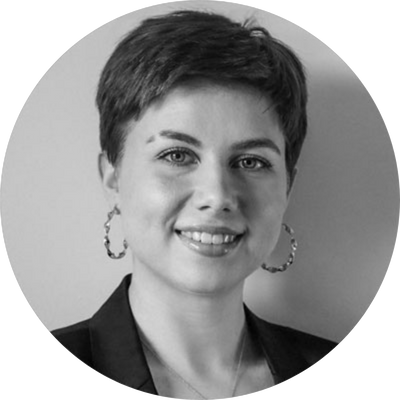It was early morning at a rehabilitation centre for drug and alcohol addiction, and everyone was already standing outside their dorm rooms, decked out in sweatpants and T-shirts, their eyes bleary and their hair dishevelled. A short, stout, officious morning nurse with a clipboard marched down the hall, ticking off attendance. Then a recording of an old woman’s voice crackled over the intercom and led us through our morning calisthenics. “Reach up to the sky,” she called. “It’s going to be a wonderful day!”
I was only a few days into a twenty-one-day residential treatment program for alcohol dependence, but I already knew a few of the characters standing in that lineup. There was a crack addict and compulsive shoplifter who ran a car wash in small-town Quebec; there was a raucous Montreal landlord who had gambled away half his buildings in a cocaine-fuelled fever. There were cracked-out lawyers and investment bankers, boozy police officers and firemen, and a surgeon obsessed with sex and OxyContin. And there I was, trying to touch my toes and reaching for the sky on this new, wonderful day, a writer and editor who had been chugging down whole bottles of Courvoisier beside Chinatown dumpsters, collapsing at public events, and waking up on park benches and in hospital emergency rooms.
I had heard rumours that there were rooms near the nursing station with signs hanging on their doors that read Do Not Knock, and that these were reserved for soldiers with post-traumatic stress disorder. Then, on a smoke break later that day, I met a man I’ll call Dave. Thirty-something and wearing pressed khaki shorts and a tight purple sports shirt, Dave stood well over six feet tall and was built like an athlete, his shoulders broad, his stomach and chest rippled with muscle. He rocked side to side, clasping and unclasping his hands, the veins in his thighs, neck, and forehead swollen and throbbing. He spoke in a loud, incessant banter, riffing jokes and puns off the few words anyone else could get in edgewise, then laughing explosively. His electric blue eyes gazed out past us, toward some abstract point in the parking lot.
Eventually, his monologue began to darken, and I could see his regally poised body begin to implode. He launched into a frenzied diatribe, describing how he had seen friends get their faces blown off while he was sitting in a Jeep talking to them, and how when he got back from his last deployment he started going to bars, drinking, snorting cocaine, and seducing women while his wife stayed home with their infant daughter. “I would call my wife from the bar, screaming and crying,” I remember him saying, “but I couldn’t stop—not even my baby girl would make me stop.”
The response was a dead, embarrassed silence, everyone hurrying to finish their cigarettes and head back inside. Lurid tales are the stock-in-trade of rehab smoke breaks; part of the bonding of treatment is the ability to reveal virtually anything without being judged. But Dave was different. He was a soldier, and with his pumped muscles and wild, sleepless, empty eyes and his almost squealing, propulsive, completely emotionless speech, with his trance-like inaccessibility, he was positively frightening.
Up to that point, my experience with troubled veterans was mostly limited to growing up in Los Angeles in the late ’70s, a time when soldiers who had fought in the Vietnam War seemed to be everywhere and nowhere. They were the slightly sinister older brothers one never saw, holed up in converted garages in their parents’ houses smoking pot and listening to Black Sabbath; the clutches of men in camouflage jackets hanging out in garbage-strewn city parks, their coolers stocked with Schlitz talls; the sources of empty bottles of Jack Daniel’s, cigarette butts, and soggy piles of porn and gun mags in the bamboo grove beside a sludgy creek. They were treated with resentment and shame, and ultimately with the same embarrassed, uncomprehending silence that greeted Dave.
I gradually learned that Dave had been an infantry officer in the Canadian Forces, deployed in Somalia, Rwanda, Bosnia, Haiti, and Afghanistan. He rarely spoke of his experiences on his tours of duty, mostly maintaining his aggressive, alienating, and not very funny comic persona. But at least by his own account, he had conducted himself with a high level of professionalism and honour while at the centre of some of the most volatile places of the past twenty-five years. It was only when he returned from his tour in Afghanistan, in time to usher his first child into the world, that he found himself unable to cope. His was a textbook case of ptsd—“co-morbid,” in psychiatric terminology, with addiction. I later heard of his struggles with treatment: stories about him freaking out in the middle of workshops, violently cursing the therapists, hurling chairs across the room and storming out.
One weekend afternoon, though, I noticed him sitting at a picnic table, engaged in what seemed to be a normal conversation with two other patients I knew had been in the military. It struck me that above all else Dave was incredibly isolated. He was among people who had no sense of the military culture that had shaped him, and no means for understanding the traumatic events he had been through. Even the counsellors and therapists were not in his league. They were benign, soft spoken, nurturing presences promoting sleep, nutrition, exercise, relaxation, and the spiritual wonders of the twelve steps to recovery.
Still, Dave was relatively lucky: at least he had found his way into treatment. When regular Canadian ground troops first arrived in Afghanistan in 2002, our military was ill prepared to deal with the mental health consequences of such a large deployment. Many traumatized soldiers who attempted to engage with the system found themselves on their own, stranded by a culture that regarded them as weak, or worse. With the mission in Afghanistan now standing as the biggest and deadliest deployment of Canadian forces since the Korean War,* the need for change was enormous. And while the military has made dramatic inroads into the problem over the past eight years, ptsd is not an ordinary war wound. Its science and treatment are relatively young and experimental, and its long-term prognosis and consequences are still poorly understood.
In 2002, André Marin, ombudsman for the Department of National Defence and the Canadian Forces, issued a landmark report to the Minister of National Defence entitled Systematic Treatment of CF Members with ptsd. Based on hundreds of interviews with current and former members of the Canadian Forces, the report was a thoroughgoing study and critique of how the CF had handled ptsd in the past. Traumatized soldiers were often stigmatized, Marin discovered. Investigators “found overwhelming evidence that many within the CF are sceptical about whether ptsd is a legitimate illness. There was a distressingly common belief among both peers and leaders that those diagnosed with ptsd were ‘fakers,’ ‘malingers’ [sic] or simply ‘poor soldiers’… We found that members with ptsd are often stigmatized, ostracized and shunned by their peers and chain of command.”
The report described with uncanny accuracy the experience of a former Canadian soldier I met. John and I first spoke in earnest outside the entrance to a college on the edge of Toronto on a damp, bitter early-winter day, alongside groups of Indian students in baggy pants hanging out and rehearsing graphic rap songs. In his early forties, John had recently returned to school to get a certificate in paralegal studies, but things were not going all that well. His posture and expression were familiar: tense, self-conscious, gaze fixed elsewhere, in this case on the cigarette butts littering the cement. He wore a cheap parka and a heavy student backpack, a toque perched on his balding head. “You know,” he said after a long silence, chuckling to himself, “it can be really, really hard to relate to people, to look them in the eye, when at any moment you might see someone totally evil staring back.”
John grew up in a small town of 500 or so, north of Toronto, the adopted son of a United Church minister and a teacher. He had an ordinary, untroubled childhood, but when he graduated from high school he had no idea what to do with himself. So he made an appointment with the local Canadian Forces recruitment officer and signed up to be a sailor. When it became clear that he lacked the mathematical skills to be a naval weapons technician, he moved over to the army. By the time he was deployed to the unravelling former Yugoslavia, he was a fourth-year corporal in logistics with a specialty in mobile support equipment operation, which in his case meant driving trucks.
His first tour of duty went relatively smoothly, but certain incidents stand out in his mind. “We went into Bosnia and back, and usually on our drives we were getting shot at—we called it harassment fire,” he told me. “Usually, there would be lots of chitter-chatter on the radio, but one day the convoy commander enforced radio silence. When we pulled into town, we could feel tank tracks on the pavement under our tires. The town was still on fire, people running around, and there was a one-armed guy carrying an infant who ran into my truck. He went down, blood spurting, but we kept going. It wasn’t our mandate; our mission was to supply and nothing else. We were keeping the infantry alive.”
During his second tour of the Balkans, things became even more intense. “I was going down the road, and our convoy got separated,” he told me. “The first sign that things were bad is we heard sounds—crack, crack—and suddenly my windshield was full of bullet holes. I had my weapon, but the rules of engagement say no return fire. I put my head down, grabbed the wheel, and pushed down on the accelerator. I finally found out it was coming from an orange truck. There was a guy firing a machine gun—drunk, I later discovered.” He continued: “The next day, we went with an interpreter to a burned-out area twice the size of a football field. It used to be a prisoner of war camp, where they lit the perimeter on fire to reduce the population of prisoners; there was a guard tower from which they would mow down people fleeing. When I went back years later, you could see the lumps below the green grass where bodies were buried.”
Early on, John learned how other soldiers coped with what they were witnessing. “Some people want to call family; others overcompensate with jokes,” he said. “But no one said shit about what went on. That’s when I first saw people opening their boxes and sharing a stiff drink… One feeling a lot of people got was that it was a place where you could feel the hate. It made us feel dirty.” By the end of his second tour, he knew something was seriously wrong. “I felt that something in me was gone. I didn’t have a full-fledged personality anymore,” he said. “Back in Canada, a seven-year relationship ended. I was numb, angry, and aggressive. I had this huge ego that said, ‘I’m a soldier, you’re a civilian,’ but at the same time I was crying at nothing.” He went on a third tour, as much to try to sort himself out as anything else. This time, it was a disaster. “On the third tour, I lost it, officially. I did six months—Bosnia, winter, mountains. I was tired of being shot at, tired of walking around with guns. I felt as though we hadn’t done anything, and I was humiliated, angry, and sad.”
Still a member of the Canadian Forces, he returned to Canada for good at the end of the 1990s, first to Edmonton, then Winnipeg, then Trenton. His mental condition swiftly deteriorated. He would hole up in his apartment for days without seeing or speaking to anyone, going out only at night. Nightmares and flashbacks played out in his head. It was as though “in one eye, I was in a movie theatre; the other eye was projecting the movie, and all the atrocities, I couldn’t stop them from playing.” There were aborted suicide attempts, too—three of them. Though previously he had never been much of a drinker, he started boozing heavily, eventually putting away a bottle of rum a day.
In those days, he pointed out, there was little in the way of debriefing upon coming back from a mission, other than speaking with a padre. Though he wasn’t specifically advised to see anyone, he sought and received sporadic counselling. In Edmonton, a psychologist at a University of Alberta Hospital group therapy program identified John’s depression and alcoholism, and he was referred to the Edgewood alcohol and drug rehabilitation centre in Nanaimo, British Columbia. There, in 2003, he was finally cited as being at risk for ptsd. The following year, he was released from the Canadian Forces, after eighteen years of service. According to John, “They said I was not suitable—that due to my issues I was not deployable.”
For a while, he floated along in a stupor, on multiple medications for depression and anxiety, relentlessly calling Veterans Affairs Canada. He applied to be classified as a ptsd sufferer, which would allow him to collect a disability pension, but he was rejected. He appealed and was reassessed, and then his appeal was rejected, too. In 2008, he arrived at the Carewest Operational Stress Injury clinic in Calgary, where he was given a preliminary diagnosis of chronic ptsd. Another year later, he appealed successfully to Veterans Affairs. To qualify for his pension, he had endured five assessments in eight years, despite having what seemed like a clear and obvious case. By then, the source of the original trauma was at least ten years old. Why had it taken so long? John speculated to me that military physicians were reluctant to issue a ptsd diagnosis because it would cost the military money. But the answers reach deeper than that, into the history of the disorder and the complications of diagnosis.
Psychologists have been trying to understand how trauma affects human beings at least since Sigmund Freud and Joseph Breuer’s work in the late nineteenth century, and to understand how war trauma in particular affects soldiers at least since the First World War. Beginning almost immediately in 1914, soldiers were being sent back from the trenches with afflictions such as amnesia, aphasia, blindness, and deafness. Some walked with elaborate, unnatural gaits; some could not sleep, trembled all over, gibbered incessantly, or cowered in the fetal position. In film footage shot at the Netley Hospital near Southampton, England, in 1917, researchers captured a very thin man dressed only in his underwear strutting across the room, stooped halfway over, his rear end thrust out, his arms mechanically flapping, his whole body twitching and jerking. For the British High Command, such exhibitions were symptoms of mass malingering and cowardice—signs, perhaps, of the corruption of the British character brought on by the years of relative affluence and leisure that preceded the war. But the numbers were too great and the conditions too bizarre to completely ignore, so psychiatrists and neurologists were hastily commandeered, hospitals were set up, and the field of military psychiatry was born.
Spanning the twentieth century’s two world wars, brilliant and sometimes eccentric figures—Charles Myers, W. H. R. Rivers, Thomas Salmon, John Rickman, Roy Grinker, and Moses Kaufman, among others—made significant strides in identifying, describing, and attempting to treat what was alternately called shell shock, war neurosis, battle fatigue, post–Vietnam syndrome, and finally, by the late 1970s, post-traumatic stress disorder. The early pioneers sought physiological causes for the disorder, but ultimately concluded that it was irreducibly psychological. By the end of the Second World War, they had identified its primary symptoms: intense anxiety, hyper-vigilance, flashbacks and nightmares, emotional numbness, volatility. They had also arrived at the rough outlines of appropriate and effective treatment: a period of rest, relaxation, and safety; therapy to bring the traumatic experience to consciousness and emotional acceptance; and, when possible, reintegration of patients with their units.
There remained, though, the sense among military people that most psychiatric casualties were malingerers and cowards, and a fear that the promise of pensions for psychically wounded veterans would create an incentive to mimic psychiatric problems. This perception began to change only after the Vietnam War. Early in the conflict, American psychiatric casualties were at a historic low, with most soldiers being swiftly returned to their units. But as the war unfolded, the incidence of psychiatric problems—or at least the perception of such incidence—among soldiers nine months or more after their tours of duty rose dramatically.
Amid an atmosphere of deepening hostility to the bloodshed abroad, organizations like Vietnam Veterans Against the War and sympathetic psychiatrists like Chaim Shatan and Robert Jay Lifton began pushing for recognition of post-Vietnam syndrome. In 1980, the American Psychiatric Association responded to the pressure, adding post-traumatic stress disorder to the third edition of its Diagnostic and Statistical Manual of Mental Disorders. This in turn placed pressure on militaries and governments to begin acknowledging and addressing ptsd as a legitimate, common illness.
The diagnostic criteria have evolved in the current manual, dsm-iv, to include an intense negative emotional reaction and persistent avoidance of the traumatic event, or any other association with it; flashbacks; nightmares; emotional numbing; hyper-arousal; and hyper-vigilance. These symptoms must last for at least a month; otherwise, one is diagnosed with acute stress disorder. And they are neutral as to the source of the trauma—that is, they do not speak to specifically military origins.
Harvard Medical School professor Judith L. Herman crafted an elegant description of the universal roots of ptsd in her 1992 book, Trauma and Recovery. “Psychological trauma is an affliction of the powerless,” she wrote. “At the moment of trauma, the victim is rendered helpless by overwhelming force… Traumatic events overwhelm the ordinary systems of care that give people a sense of control, connection, and meaning.” The presence of a discernible traumatic event should, in theory, make ptsd simple to diagnose. One psychiatrist I spoke with suggested that it should actually be one of the easiest conditions in the dsm to identify. But diagnosis can be complicated by other factors: a history of conditions like depression and addiction, or traumas unrelated to military service. (This may have been the case for John, for example.) Unlike most physical war injuries, ptsd is intimately intertwined with a person’s psychological history.
Diagnosis might one day become easier, thanks to ongoing research into ptsd’s neurological causes and indicators, and to advances in neuro-imaging. Dr. Ruth Lanius, a professor of psychiatry at the University of Western Ontario and one of the leading researchers in the field, says volume loss in the hippocampus, a region of the brain associated with the creation of new memories, may help explain why ptsd sufferers re-experience aspects of the trauma through flashbacks, dreams, and bodily sensations. The amygdala, the brain centre connected with emotions, appears to have been affected in people with ptsd as well. In healthy people, measurable fight-or-flight responses are triggered by threatening circumstances, and they dissipate at a predictable rate once the threat is gone. In those with ptsd, the fear switch is permanently on, or “disregulated,” meaning they are in a continuous state of hyper-arousal. Sufferers also experience a general disconnection between the emotional function of the amygdala and the executive functions of the frontal cortex, the region of the brain responsible for rational planning and assessment of reality.
These neurological advances could eventually also lead to better, more focused treatments for ptsd, but that remains for the future. In the meantime, the Canadian military has been working to improve its prevention and treatment measures: the steps it has taken over the past few years to overhaul its mental health system look like a direct response to André Marin’s original criticisms. In all likelihood, soldiers returning from recent tours in Afghanistan will not face the same challenges John and Dave did, and those who come home with signs of psychological trauma will be far less likely to go untreated. This has been a system-wide effort, but much of it has been driven by one particularly motivated soldier, Lieutenant-Colonel Stéphane Grenier.

Imet Grenier on a February morning at Le Moulin de Provence café in Byward Market in Ottawa. Now well into his forties, he is a wiry, animated man with a shaved head and wire-rimmed glasses. Grenier served under Roméo Dallaire in Rwanda, and since then has been deployed in Cambodia, Lebanon, Haiti, and most recently Afghanistan. He is an intense, focused, and driven man, and though he enjoys lengthy conversations (“I’m a Frenchy—I love to talk!”), he obviously had little patience for idleness. “I told our media people, ‘I won’t let him interview me if it’s for less than an hour,’” he said a few moments after walking into the café. “I wanted to know that you are serious.” The press officer assigned to sit in with us already looked exhausted.
“When we came back from Rwanda,” Grenier said, “General Dallaire said, ‘Let’s record what happened to us.’ So I made an internal video called Witness the Evil, where General Dallaire first came out about his struggles with ptsd.” He recounted a bit of his own story for me. “When I first came back from Rwanda, I was a mess,” he said. “From 1995 to 1998, I was a mess. I would smell dead bodies out of nowhere. I would wander around in a trance without any memory of it. I came into the hospital one day after contemplating suicide, and I wondered, ‘What is wrong with me? I have a wife, children…’”
He was already frustrated by the military’s mental health system, which was, he said, “too linear” and too disconnected from the experience of being a soldier. Previously, those who could bring themselves to acknowledge that they were having problems would be shifted from their units into a medical system with professionals who did not share their experiences, and whom they did not trust. The disconnect between soldiers and medical caregivers was an ongoing problem. Grenier became uncharacteristically sarcastic when speaking about the kinds of advice mental health educators used to give. “They would say, ‘Make sure you relax, get enough sleep, eat properly, exercise every day, stay in touch with your friends.’ But how are you supposed to do that when you’re in a ditch outside the wire? ”
His breakthrough moment came when his superior officer took him aside and told him, “Stéphane, you’re not the guy I heard about.” This, he told me, “gave me permission to seek help. The day I did that was the day I started to recover. And when I did that, I thought, ‘Holy shit, what if this was general? ’” Meaning, what if every struggling soldier had someone he trusted and respected take him aside and say, “Hey, you haven’t been yourself. Maybe you need to go get some help”?
In 2001, Grenier launched the Operational Stress Injury Social Support (osiss) program, which today includes some forty support counsellors—twenty Canadian Forces veterans who were once diagnosed with ptsd, and twenty family members of ptsd sufferers. “Operational stress injury” is a phrase Grenier coined to bypass the stigma associated with “post-traumatic stress disorder,” a term most soldiers despise, because it implies that they have a disease rather than a kind of wound. One of the counsellors’ most important roles, he told me, is to “pound the jungle drums and find people in the hurt locker”; another is to provide an easy segue into treatment—to give soldiers permission to get help.
“Early on, we didn’t have expertise in deployment mental health issues,” says Lieutenant-Colonel Rakesh Jetly. Dr. Jetly is a psychiatrist who, like Grenier, was deployed in Rwanda and has, in his current role as adviser to the Mental Health Directorate in Ottawa, twice spent time working at the base hospital in Kandahar. “In Rwanda, we didn’t have people there, and then we didn’t have any set program of how to help people post-deployment.” Now, Jetly says, the Canadian Forces’ approach to mental health is comprehensive. “It starts at the recruit level; they need to think of it in the same way as physical fitness,” he told me. “Right off, we talk about coping and stress. The idea is that individuals have to take care of themselves, and also to start being responsible for others.”
Among the military’s new initiatives is the Joint Speakers Bureau, launched by Grenier after he returned from Afghanistan in 2007. The jsb teaches deploying soldiers, and especially leaders, how to detect and address operational stress injuries. These education programs began just last fall, and so will only impact the late stages of Canada’s mission in Afghanistan, but they will be an important part of future deployments. In addition to the jsb sessions, soldiers received the Road to Mental Readiness manual, part of a program developed with input from the US Navy seals. The guide contains tips on techniques for controlling stress, such as tactical breathing, and outlines the resources available to them in the field. Once in theatre, a full team is in place—not only peers and superior officers, but also chaplains, med-techs, medical officers, and a full mental health support team. If a soldier needs to be sent home, a psychiatrist can get on the phone and make the appropriate appointments in advance.
The Canadian Forces have also changed their reintegration practices. Notably, they have introduced a five-day decompression stay at a resort en route back to Canada, in keeping with the common belief that soldiers coming home from the Second World War reintegrated more quickly and successfully into civilian life than those who served in Vietnam, partly due to different methods of transport. The long journey by ship from Europe or the Pacific allowed for a slow period of readjustment, whereas the flight from Saigon was jarring. Jetly recalls for me how disorienting his return from Kigali was: “One day, I was sleeping in a stadium across from dead bodies; the next day, I was back in Ottawa.”
Upon returning to Canada, soldiers are screened for ptsd, depression, and family problems. “I see everyone when they come back,” says Lieutenant-Colonel Jim Kile, the regional surgeon for 4 Health Service Group in Toronto. “We do the pen and paper screening and a face-to-face interview. It’s yet another opportunity to ask questions, and for red flags to be raised.” According to Jetly, about 6.1 percent of Canadian soldiers screen positive for ptsd or depression and end up in treatment. The figure is the envy of his American counterparts, who see rates as high as 15 percent. The Canadian system isn’t perfect—it may not account well enough for the fact that ptsd can take years to manifest after the initial trauma—but for those who are identified early on and need care, treatment is now rapidly and widely available. As Grenier told me, “We want to break down the barriers to care; we want there to be as many avenues to treatment as possible.” And once the soldiers arrive, treatment is increasingly being influenced and assisted by their peers.
Sitting in his corner office at the Operational Stress Injury Clinic at Parkwood Hospital in London, Ontario, Mike Newcombe looked nervous; a soldier’s soldier, he was obviously uneasy speaking to a civilian about ptsd. In his late forties, compact, his hair brown and his face deeply lined, Newcombe was in the Canadian Forces for more than twenty years, mostly as an infantryman with the Royal Canadian Regiment. He deployed multiple times, including to the former Yugoslavia, and over the years became increasingly angry and anxious. Finally, he told me, one day “I was at a conference, and something went up on the screen and I completely blacked out. At that point, I realized this wasn’t going away.” By 2002, he knew he had to get out, and just a few years later he had a massive, near-fatal heart attack, which he attributes to a toxic accumulation of stress.
“When I first came into peer support,” Newcombe said, “I didn’t want to be there, but then I thought, ‘These guys are going through the same thing I am.’ It’s easier to talk to someone who has been in the military, and it gives you more confidence. Unless you’ve lived it, no one knows what it’s like. When I got back from my missions, people would shake my hand, but they didn’t know.” He eventually became a peer support volunteer, and then was hired on as a coordinator.
Newcombe’s office is down the hall from a full staff of nurses, psychologists, and psychiatrists, with whom he has a fluid relationship. Most patients come to him by word of mouth, and he talks to them individually and in structured group meetings. “About 75 percent of them are younger guys, but at least 25 percent come out of the woodwork,” he said. “The oldest is eighty-seven or eighty-eight. And there is no difference between the young guys and the old ones.”
Treatment at Parkwood, as elsewhere, tends to follow the program set forth by Herman’s seminal Trauma and Recovery, moving patients slowly through the stages of safety, remembrance, and reconnection. “It’s incredibly important to treat trauma,” says Anne Pepper, supervisor of the ptsd and addiction program at Bellwood Health Services in Toronto, “partly because it doesn’t just affect individuals; it affects all of society and future generations—look at the children of Holocaust survivors.” The first priority for doctors is stabilization and grounding. “By far, getting sleep is the biggest problem,” says Dr. Bill Jacyk, attending physician of the trauma and addiction program at the Homewood Health Centre in Guelph, Ontario. “We don’t do any exposure therapy at first,” in part because if a patient is not in a position to confront the trauma, it might make problem worse. “We first deal with ordinary life. Sometimes we have people who have been in the basement for a long time. We get people who say, ‘Why can’t we just talk about limbs being blown up? ’ But it’s not spectacular things that entrap you; it’s ordinary things.”
Once a person has a sense of security, the next phase of treatment is trickier and subject to more disagreement among professionals. In an in-patient treatment context focused on both trauma and addiction—over fifty percent of ptsd sufferers also have addiction issues—therapy to address the trauma directly is often deferred until after the treatment program is completed, so as not to risk making the trauma worse. Once begun, though, the three principal therapies used in treating ptsd are exposure, cognitive behavioural, and emdr (eye movement desensitization and reprocessing). Exposure therapy involves working through the details of the trauma; cognitive therapy aims at developing better mental coping strategies; emdr focuses on specific traumatic memories and attempts to establish positive associations in their place. All three are, Pepper says, an effort to “change neural pathways, make it possible for them to interpret the world as safe.” And all three approaches to ptsd speak to a deceptively simple aim: learning how to relax and to manage stress, typically through meditation and breathing, before it spirals out of control.
One of the most disabling features of ptsd (and addiction, for that matter) is how it tends to shatter a person’s social support system. In fact, most psychiatrists in the field list strong social support as one of the indicators that a person who has suffered a traumatic experience will be less likely to develop ptsd. This concern can be especially acute for returning soldiers, who almost universally find it difficult to relate to people who have not been in a war zone. Newcombe tends to tear up when he speaks of his two children and his wife, from whom he is separated. (According to him, Grenier did the same when speaking about his family on a recent visit to the clinic.) “If I get back together with my wife,” he said, “it will be because of osiss.” Both osiss and the Joint Speakers Bureau have programs for families, because a solid and understanding family substantially increases an individual’s chances of recovery—though, according to Grenier, it remains difficult to get them fully involved.
Psychiatrists are fairly optimistic about the prospects for long-term treatment, especially given recent research advances. “As a rule, one-third recover, one-third remain symptomatic, and one-third don’t respond well to treatment,” says Dr. Don Richardson, a psychiatrist who works alongside Newcombe at Parkwood. “But if people follow treatment guidelines, you get 50 percent success rates.”
Both Newcombe and Grenier are circumspect about the prospects for recovery, however: they believe they live with a condition that can be managed but not cured, and that relapses into old triggers and symptoms and habits are inevitable. The condition also presents new challenges with every new mission. Steve Lively, who became a peer support coordinator some time after being deployed with Joint Task Force Two in Africa in the 1990s and now works with the jsb, told me they are already seeing people from the relief effort in Haiti. “I was talking to navy guys who said that in collapsed houses in Port-au-Prince, exposed body parts were being devoured by animals,” he said. “And family members were [the ones] cutting them off.”
For soldiers like Lively, or like John and Dave, these missions abroad are typically the culmination of years of education and training. They are, as a young reservist and student at the University of Toronto told me, soldiers’ best opportunity to employ the elaborate skills they have acquired. No one expects to come home from their adventure entirely changed. But as Ruth Lanius says, ptsd affects the whole person, and it remains hard for the afflicted and their peers not to believe that something in them is flawed or weak.
Lanius also points out that one of the characteristics of the disorder is a lessening of one’s capacity to identify the emotions that drive one’s behaviour—something that is also true of addiction. I could never explain to myself or anyone else why, when going to a polite, bookish cocktail party intending to have a glass of wine and casually socialize, I would end up being found splayed unconscious on the sidewalk outside. As a result, I felt more at home in dives among alcoholics, drug addicts, ex-cons, and, yes, a few veterans. Soldiers with ptsd often report that they have “no idea what is happening to them,” and they similarly isolate themselves from friends, family, and colleagues out of shame at what they have become. One decorated veteran Grenier told me about went so far as to change his name, out of fear of being discovered by someone he knew.
Treatment helps instill a sense of control, but in a way it never really ends; one has to remain vigilant, wary of triggers and relapses into old habits and patterns of behaviour. Like Grenier and Newcombe, I’m not optimistic that the sense of self-doubt and brokenness, the sense of one’s very self as shaky, that comes with the experience of both ptsd and addiction ever completely goes away. If elderly veterans are still finding their way into Mike Newcombe’s osiss groups, then despite all the current neurological research and soldier education, it seems likely that the veterans of Afghanistan will still be seeking help thirty, forty, fifty, even sixty years from now. That alone should give us pause when our politicians decide to send courageous young men and women off into harm’s way.
* The printed version of this story mislabels the Afghanistan conflict as Canada’s deadliest since the Second World War. The Walrus regrets the error. Return to the corrected sentence.
This appeared in the July/August 2010 issue.






